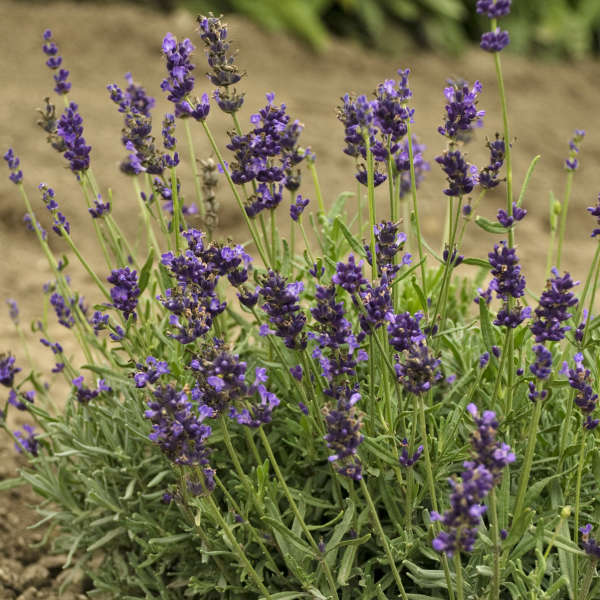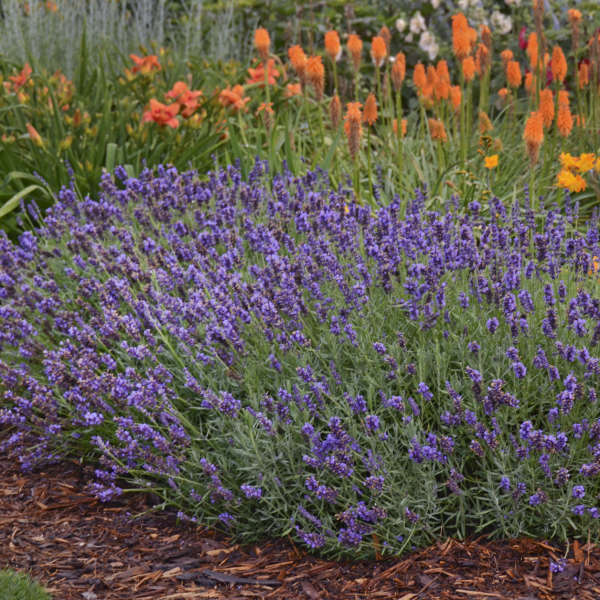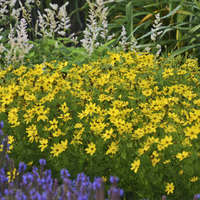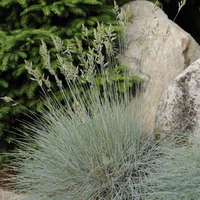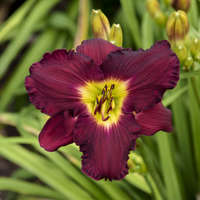Lavandula angustifolia 'Blue River'
Common Name: English Lavender
This petite seed variety of lavender offers a uniform, compact habit on densely mounding plants. Incredibly intense purple, highly fragrant flowers are held above the silvery green foliage from midsummer into early fall.
This plant is just the right size for growing in containers, herb gardens, or as edging for flower borders.
Lavender has been grown for centuries for its intensely fragrant flowers and beautiful appearance. It is a staple item of every sunny garden, and its dried flowers are widely used in potpourris and arrangements.
